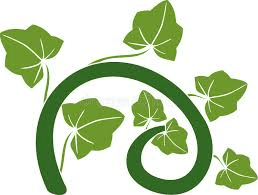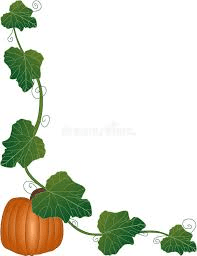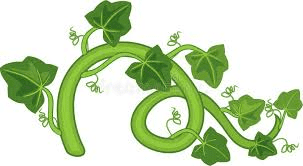Pumpkin stems are the woody, vine-like structures that connect the pumpkin fruit to its main vine and provide support as the fruit develops and matures. While often removed during harvesting or culinary preparation, pumpkin stems serve several important functions in the growth and development of the plant.
From a botanical perspective, pumpkin stems are vital for the transport of water, nutrients, and hormones throughout the plant. They act as conduits, delivering essential resources from the roots to the leaves, flowers, and fruits of the pumpkin plant. Without healthy stems, the overall growth and productivity of the pumpkin plant can be compromised.
In culinary terms, pumpkin stems are typically not consumed due to their tough, fibrous texture and bitter taste. However, they can be used in decorative arrangements or composted to enrich garden soil. In some cultures, young and tender pumpkin shoots or tips from the stem may be harvested and cooked as a seasonal delicacy, offering a unique flavor and texture similar to other leafy greens.
Beyond their direct culinary use, pumpkin stems can also be used in natural crafts and decorations. Dried pumpkin stems are often preserved and used in autumn-themed floral arrangements, wreaths, or centerpieces, adding a rustic and seasonal touch to home décor.
In summary, while pumpkin stems are not typically consumed in culinary dishes due to their texture and taste, they play a crucial role in the growth and development of the pumpkin plant. Their structural support and nutrient transport functions contribute to the overall health and productivity of the plant, ensuring the successful maturation of the pumpkin fruit.
The Economic Importance and Uses of Pumpkin Stems

1. Agricultural Waste Utilization: Pumpkin stems can be composted or used as mulch in agriculture, enriching soil fertility and moisture retention.
2. Craft and Art Materials: Dried pumpkin stems are used in artistic and craft projects, such as wreaths, ornaments, and seasonal decorations.
3. Traditional Medicine: In some traditional practices, extracts from pumpkin stems are used for their purported medicinal properties, such as anti-inflammatory effects.
4. Educational Tools: Pumpkin stems are used in educational settings to teach students about plant anatomy and composting practices.
5. Environmental Sustainability: Utilizing pumpkin stems reduces agricultural waste and supports sustainable farming practices.
6. Animal Feed: In some cases, pumpkin stems can be used as a supplementary feed for livestock, providing fiber and nutrients.
7. Ethical Consumerism: Products utilizing pumpkin stems appeal to consumers interested in sustainable and eco-friendly products.
8. Pest Control: Extracts from pumpkin stems are sometimes used in organic pest control solutions for gardens and farms.
9. Cultural and Decorative Significance: In some cultures, pumpkin stems are incorporated into cultural events and decorations, symbolizing harvest and abundance.
10. Soil Amendment: Composted pumpkin stems improve soil structure and nutrient content, supporting healthy plant growth.
11. Seasonal Products: During autumn, pumpkin stems can be used in seasonal products and decorations, enhancing festive displays.
12. Food Packaging: Innovations in sustainable packaging may explore biodegradable materials like dried pumpkin stems for eco-friendly packaging solutions.
13. Artistic Medium: Dried and shaped pumpkin stems are used as a medium for artistic creations, sculptures, and handmade crafts.
14. Herbal Remedies: Extracts or infusions from pumpkin stems may be used in herbal teas or tinctures for their potential health benefits.
15. Horticultural Practices: Pumpkin stems are studied and utilized in horticultural research and breeding programs for improving crop resilience and productivity.
16. Culinary Uses: While less common, young and tender pumpkin stems can be cooked and consumed in some culinary dishes for their unique flavor and texture.
17. Energy Source: In agricultural areas, pumpkin stems may be used as a biomass energy source for renewable energy production.
18. Community Engagement: Pumpkin stems can engage communities in gardening projects, emphasizing sustainable practices and food production.
Read Also: 3 Health Benefits of Slippery Elm (Ulmus fulva)
The Products and By-products That Can Be Derived From Pumpkin Stems

1. Craft Supplies: Dried pumpkin stems used in crafting, such as making wreaths, ornaments, and seasonal decorations.
2. Compost: Decomposed pumpkin stems used as organic matter to enrich garden and agricultural soils.
3. Artistic Decor: Decorative items made from dried and shaped pumpkin stems, enhancing seasonal displays and home decor.
4. Traditional Medicine: Extracts or infusions from pumpkin stems used in herbal remedies for their potential health benefits.
5. Educational Tools: Pumpkin stems used in educational settings to demonstrate plant anatomy and composting principles.
6. Pest Repellent: Natural extracts from pumpkin stems used in organic pest control solutions for gardens and farms.
7. Biodegradable Packaging: Innovations may explore dried pumpkin stems as a biodegradable material for eco-friendly packaging solutions.
8. Animal Bedding: Dried pumpkin stems used as bedding material for animals, providing a natural and sustainable option.
9. Cultural Artifacts: In some cultures, dried pumpkin stems are used in traditional ceremonies and artistic expressions.
10. Seasonal Decorations: Pumpkin stems incorporated into seasonal crafts and decorations, reflecting harvest traditions.
11. Horticultural Research: Studying pumpkin stems for their genetic traits and resilience in horticultural research and breeding programs.
12. Energy Production: In agricultural settings, pumpkin stems may contribute to biomass energy production as a renewable energy source.
13. Natural Fibers: Fibrous components from pumpkin stems explored for their potential use in textile and manufacturing industries.
14. Environmental Education: Pumpkin stems used in educational programs to promote environmental awareness and sustainable practices.
15. Culinary Innovation: Exploration of culinary uses for young and tender pumpkin stems in experimental and traditional dishes.
Read Also: 6 Health Benefits of Oregano (Origanum vulgare)
Frequently Asked Questions (FAQ’s) About Pumpkin Stems

1. Can you eat pumpkin stems?
While edible, pumpkin stems are typically tough and fibrous, making them less palatable compared to other parts of the pumpkin.
2. How do you dry pumpkin stems for crafts?
To dry pumpkin stems for crafts, cut them to desired lengths and air-dry in a cool, dry place until fully hardened.
3. What are the benefits of using pumpkin stems in compost?
Pumpkin stems add organic matter to compost, improving soil structure, water retention, and nutrient availability for plants.
4. Are pumpkin stems used in traditional medicine?
In some cultures, extracts from pumpkin stems are used in traditional medicine for their potential anti-inflammatory and health-promoting properties.
5. How long do pumpkin stems take to decompose in compost?
Pumpkin stems can take several weeks to months to fully decompose in a compost pile, depending on environmental conditions and compost management.
6. Can pumpkin stems be used as animal feed?
In some cases, young and tender pumpkin stems may be used as supplementary feed for livestock, providing fiber and nutrients.
7. Are pumpkin stems safe for pets?
Raw pumpkin stems are not recommended for pets due to their tough texture and potential digestive issues. However, cooked or processed pumpkin stems may be safer in moderation.
8. How do you use pumpkin stems in pest control?
Extracts from pumpkin stems are sometimes used in organic pest control solutions, either as deterrents or natural repellents for garden pests.
9. Can pumpkin stems be used as natural fibers?
The fibrous components of pumpkin stems have been explored for potential use in textile and manufacturing industries, although commercial applications are limited.
10. What cultural significance do pumpkin stems have?
In various cultures, pumpkin stems are used symbolically in harvest celebrations, traditional ceremonies, and artistic expressions, reflecting cultural values and agricultural heritage.
Read Also: Practical Steps to Covert Paper Wastes into New Paper Products

